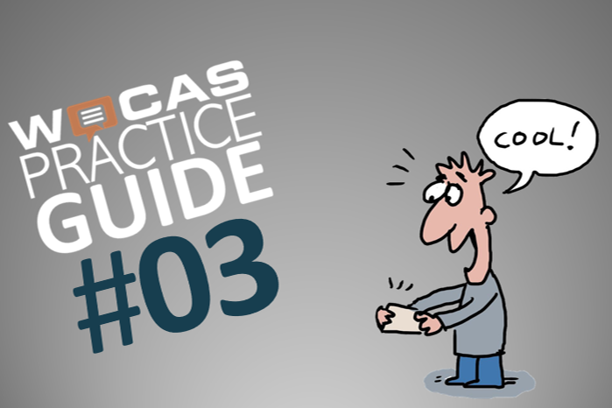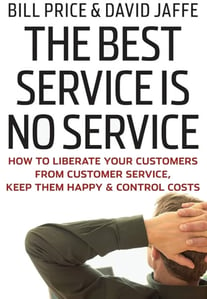
Finally clarity! Or: how a simple 2x2 matrix can change your company
You want to reduce your customer contacts and already have a better understanding of your customers´concerns (–> WPG#01) and what triggers are responsible for them (–> WPG#02). Now the question arises: How do I make the right decision on how to deal with the concerns and the associated contacts? Digitize, simplify or eliminate? How do I avoid making the wrong decisions? The value/irritant matrix offers a tried-and-tested method for classifying customer concerns according to their added value for your customers and for your company.
What is the problem?
A look at the structure of concerns alone does not allow a reliable and well-founded derivation of action strategies.
Example: An energy supplier responded to the high number of contacts with the request "I don't understand my bill" by offering explanatory videos. It succumbed to the temptation of digital solutions ("self-service videos") instead of tackling the root of the problem. After all, it remains a nuisance for customers if the information on the invoice form is not understood. Some customers feel incompetent to understand the invoice, others invest time in searching for explanations. The right strategy for action eliminates the causes of the problem and is therefore: design and introduce a customer-oriented, comprehensible invoice form.
"A frictionless customer experience is non-negotiable if you want to be successful in competitive markets."
The reason for this is simple: when you remove friction from a process or customer journey, you give your customers back the only resource that is limited and cannot be increased: time.
Example: An online retailer has implemented a voice bot that can answer these questions due to the many calls asking "Where is my order?". The right action strategy would be to anticipate the question and proactively provide customers with information about the delivery status. This would have saved customers the time and effort of trying to access the telephone service and learning how to use the voice bot.
A 2x2 matrix that brings all the pieces together
We have been working closely with service specialists Bill Price (Amazon's 1st Global VP Customer Service) and David Jaffe for more than 20 years. In their 2008 management bestseller "The Best Service Is No Service", both presented a tool to bring order to the structure of inquiries and the resulting contact volume, which has lost none of its topicality and relevance to this day: The Value/Irritant-Matrix.
With this instrument, the decisive criterion for assessing a customer request is its added value for the customer and the added value for the company. The customer is asked whether they perceive the reason for the contact as valuable (value) or annoying (irritating). From the company's perspective, it is asked whether the reason for the contact offers added value for the company (value) or only increases operating costs (irritant).

Two different situations typically arise for customers:
- The request is of value to the customer.
Example: "I would like to amend my contract". Such requests are often customer-induced. - The request is disruptive or annoying (irritating) for customers.
Examples: "I don't understand my bill" or "I don't understand a set of instructions". The causes of such concerns often lie on the company side.
As customer concerns are formulated in close alignment with customer language ( –> WPG#01), it is easy to assign them with an emphatic view of the customer.
Equivalent results for the company:
- The customer concern is valuable.
Examples: "I need advice on choosing the right product for me" or "I would like to adjust my insurance cover." - The customer concern is annoying (irritating).
Examples: "I would like to port my phone number" or "I have new bank details"
The combination of both views forms a 2×2 matrix, the value/irritant matrix, in which each concern can be categorized.

Bill Price and David Jaffe have linked a clear action strategy to each of the four fields of Value/Irritant:

While the basic principle of the matrix can be described in a few words, the practical work with and on the matrix proves to be quite challenging. A company that wants to differentiate itself on the market through individual consulting will derive different approaches than a company (e.g. a mobile phone discounter) that wants to get closer to its digitally affine customers.
Due to the company-specific structure of concerns and the categorization of these concerns in the matrix, the value/irritant matrix can take very different forms in practice, also with regard to the size of the potential (measured by the proportion of customer contacts in the total contact volume).
With our expertise, we have been supporting companies for more than 15 years in the creation of a customer-centric concern structure, the formation of a company-specific value/irritant matrix and the operationalization of the results. Over the years, we have observed industry-specific characteristics and general trends:

-
Overall, there is considerable potential for contact reduction in the elimination and digitization quadrants across all sectors, accounting for up to 80% of all contacts.
-
In recent years, we have seen considerable progress in the area of elimination, while the potential in the area of digitization has grown. This is the main starting point for the future, as the opportunities for successful digitalization are increasing significantly as a result of technological progress and the increasing digital maturity of customers.
-
The potential for simplifying customer interactions has become smaller over the years thanks to continuous and effective process optimization in companies.
-
In the course of the expansion of digital offerings and business models, the area of intensification is increasingly shifting to the area of digitalization. This is also facilitated by the simplification and standardization of products and digital contract routes.
How to get started and what does it take?
The value/irritant matrix is increasingly being used as an important tool by service managers as a guide to action for companies. It is used to launch automation technology projects - e.g. self-service tools or conversational AI - in line with customer expectations. Only feedback with customer expectations ensures that investments in service digitalization are successful and effective.
The creation of a company-specific value/irritant matrix is achieved with the following steps:
- Gain clarity about customer concerns and the resulting contact volume through a customer-centric intent structure (–> WPG#01).
- Identify the business owners in the company for the most important volume-determining concerns.
- Involve company management and business owners in the process of assigning concerns to the value/irritant context. If this takes place as part of a workshop, we experience productive and intensive discussions about the customer experience in alignment with the corporate strategy and ultimately a higher level of commitment to the implementation measures.
How WOCAS® can support you in developing your value/irritant matrix
For over 15 years, we have been supporting companies in the DACH region in gaining transparency with the help of the Value/Irritant method. The large number of projects and industries have made us the value/irritant experts on the market.
This experience has been incorporated into the development of our WOCAS® software over the years. As a workflow, communication and analysis tool, our software now supports the entire process from intent formation to the quantified presentation of the value/irritant matrix and the value/irritant workshop. A value/irritant project can be started quickly with minimal configuration. With the help of the powerful analysis capabilities, evaluations and initial findings are quickly available in the software.

Feedback
We would be very glad to receive likes and comments or if you share our practice tip to make it accessible to other interested parties. You can do this by following our LinkedIn company page.
Want to talk to us? - Great!
We look forward to hearing about your challenges in a non-committal conversation and finding out together how WOCAS can help you.
